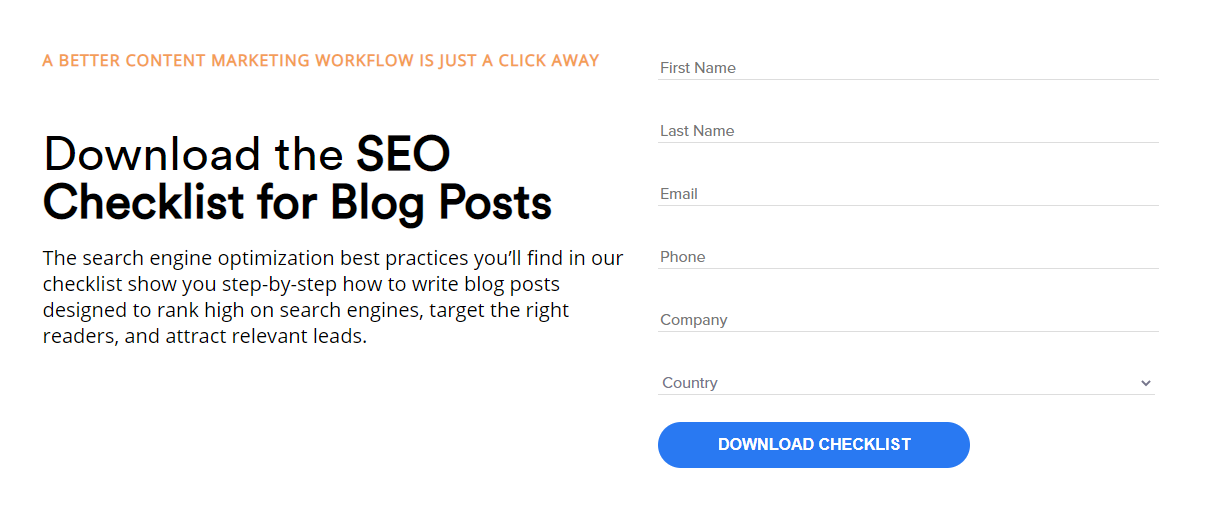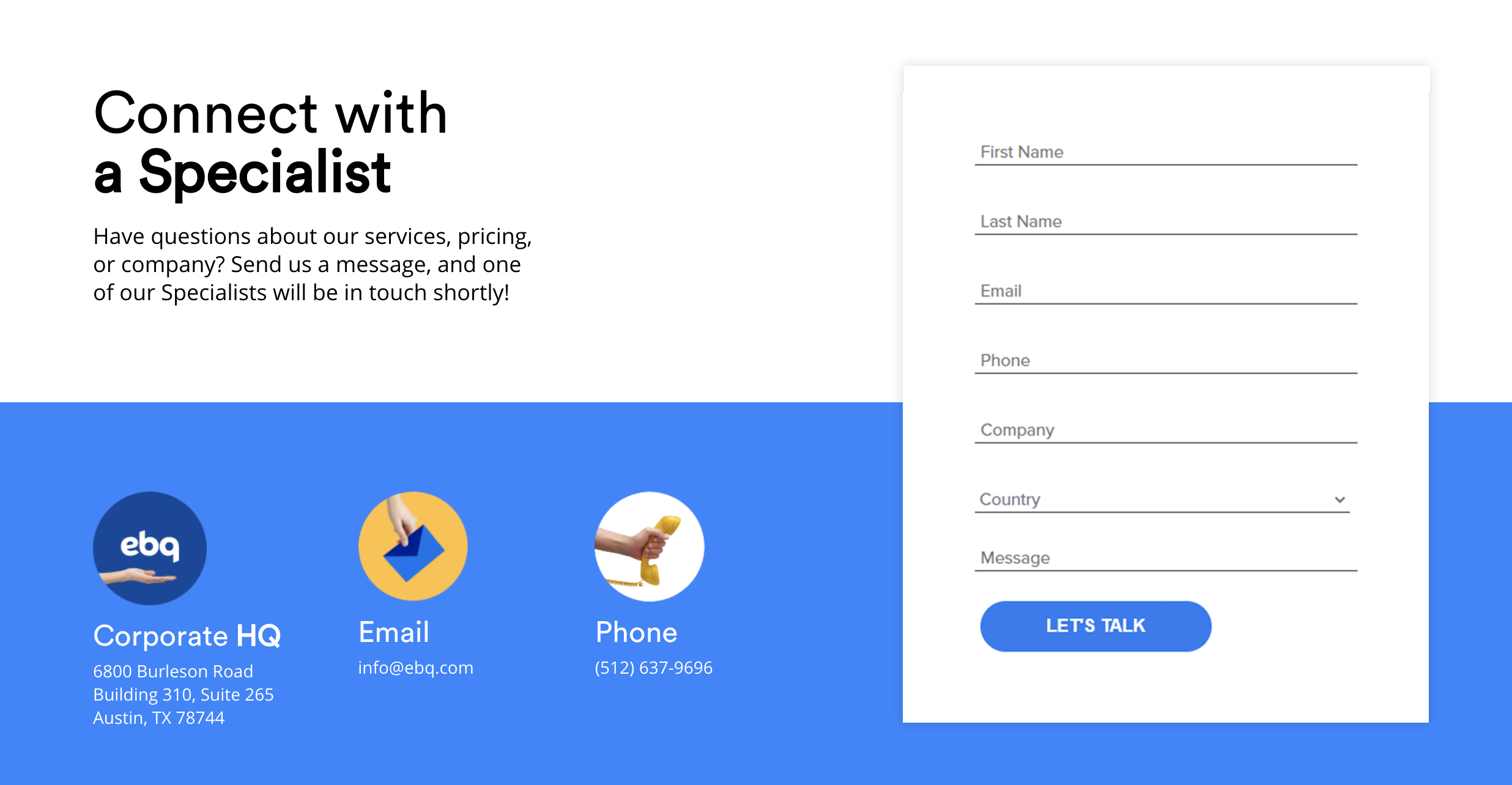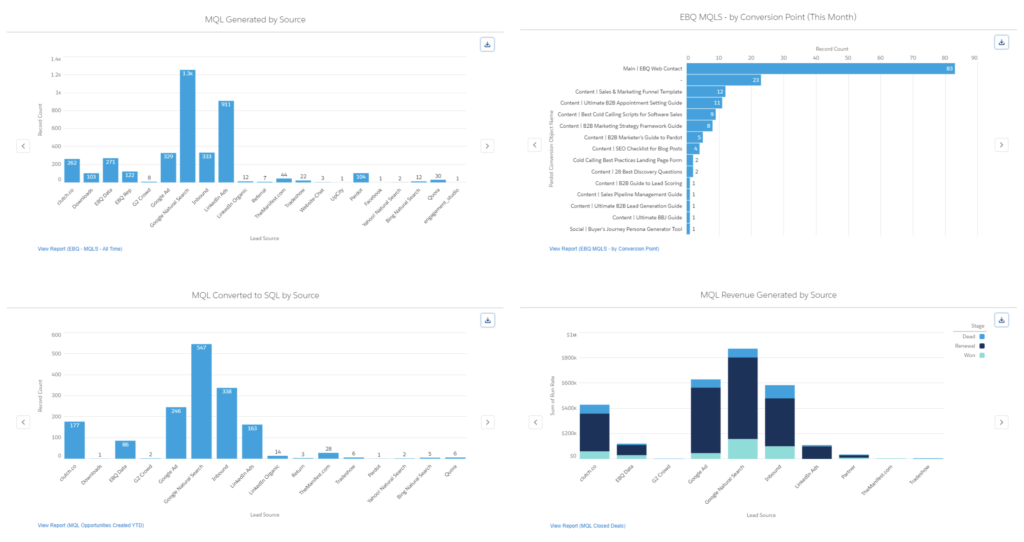Marketing-Qualified Lead Sources and Their Impact On Your Pipeline


Makenzi Cotton
With the proper tools and framework, acquiring leads through digital marketing can be a much smoother and more pragmatic process for most businesses than traditional methods.
However, getting marketing-qualified leads — those who have engaged with your brand, have shown an interest in your solution, and are more likely to convert — is a complex task that requires a great deal of research and funnel development.
An Overview: How to Generate MQLs
To get things started on the right foot, your sales and marketing teams need to be in agreement on your ideal buyer persona, who qualifies as an MQL, your lead scoring system, even the right questions to ask leads and how to best capture their responses.
On top of this, you’ll need to have the necessary infrastructure like an optimized website and a multi-channel marketing strategy. Together, these elements create a strong foundation to continue to nurture leads and to develop and reinforce a relationship with your prospects in the transition from lead to customer.
Read our recent blog post on B2B Demand Generation for a more in-depth look at the process of creating this infrastructure.
A Breakdown: MQL Sources & Their Unique Value
Certain marketing activities suggest a higher level of interest than others. For example, the action of requesting more information about a product often implies more interest than downloading a general educational content piece.
That’s not to say certain forms of content provided to prospects are of less worth. In fact, all of the strategies that we’ll lay out have opportunity for serious value, but it’s up to your own team to first determine your ideal buyer’s intent and identify how you can best meet their needs with your content and how your solution ties into their objectives.
This is the lead nurturing process, and it is critical to success. The difficulty lies in providing a consistent stream of interesting, informative, and even challenging content that keeps prospects engaged and informed as to how your solution addresses the issues they’re experiencing. At the same time, your strategy should be able to be measured and adjusted in order to identify what approaches have been most successful.
After reading through these types of marketing leads, research and make use of your own data to determine which of these would be most beneficial to your target buyer persona and, by extension, your business.
Blog Subscriptions
Once you have a high-quality website, the next logical step is to continue to provide information to your prospective customers that is in line with their needs. An easy way to do this is to begin a blog and allow visitors to sign up for a subscription.
In order to help more people find your blog content, posts should be optimized for search. Search engine optimization (SEO) helps you rank higher in search engines like Google, so you can get more website traffic. For more on this, take a look at our SEO Checklist for Blog Posts.
Allowing visitors to subscribe means you get identifying information about them like an email address, so you can nurture them over time. With the right posting frequency and cadence, subscribers will return for more helpful blog content, providing more opportunity to move them further along in the buyer’s journey.
Tools like website analytics and email automation give you a window into who your subscribers really are by tracking which blog pieces and subscription emails they interact with, so you can determine who is marketing-qualified and at which point they convert to MQL.
Content Downloads
The next indicator of interest is the content that subscribers download. Creating gated content, content pieces in PDF and other formats that visitors can download after submitting a form, is another effective way to gather prospect information and convert MQLs.

If you have identified prospect pain points that align with your business’s solution, it follows that a great way to get that across is by creating content that speaks directly to their issues.
Like with blog posts, you will want to ensure each piece of downloadable content is organized in your marketing platform by its topic (or related pain point) and with which stage of the buyer’s journey it speaks to.
This way, after subscribers have gotten the most out of your content, you get the most out of the resulting data to better understand your subscribers and have a better grasp of what will move them further along in their journey to becoming a customer.
Case Studies
&
Whitepaper Downloads
In a lot of ways, case studies and whitepaper downloads should be treated similarly to content downloads and blog subscriptions. These pieces should be monitored to see what prospects found them helpful, based on the focus of the case study or whitepaper.
Case studies and whitepapers are particularly compelling in that they provide concrete evidence that your solution is effective and leads to success. For example, a case study detailing a client’s dramatic increase in inbound inquiries after working with your company can be highly persuasive to prospects who are looking to do the same.
At the same time, these types of content downloads are also valuable because they tell you which exact solution a prospect may be interested in. This insight can be used to segment prospects and provide more narrowly targeted content.
For a more in-depth understanding of content strategy, and how all the different types — blogs, gated content, and whitepapers — can help your business, read our article about How Content Marketing Generates B2B Leads.
Web Chat
Web chat tools allow you to immediately communicate with any visitor who lands on your website. Web chat is not only a great way to provide responsive customer service, but it’s also an effective way to turn anonymous visitors into new leads.
Oftentimes, the typical web chat people think of is an example of textbook mismanagement. It feels less like a resource and more like an annoying pop-up with automated responses.
Many companies use automated web chat, or a mix of automation and live agents. We always recommend implementing a personal touch with prospects, so we suggest having a sales rep available to chat with visitors.
When managed well, your prospects will ideally appreciate the inherent value of immediate personal outreach.
Additionally, they may move straight onto the next stage of the buying process by providing their contact information if they feel the conversation is worth continuing. Or better yet, they believe you offer a viable solution and they are interested in a sale.
Virtual Events
While trade shows, conferences, panels, and webinars have all gone virtual in the past year, their importance remains the same. These virtual venues can act as powerful inbound marketing events for your organization.
These types of events present a unique opportunity to literally speak to the issues businesses are facing and present your solution. Prospective leads can offer up questions in real time to better understand how you provide value and seek out further interaction.
This is a much more streamlined process to potentially gain more MQLs compared to content downloads or blog posts scheduled out over weeks or months, and a big reason why it’s a popular method among businesses looking to generate more leads.
Whether you’re holding your own informational webinar or attending a virtual trade show with many other vendors, the prospects you meet have chosen to listen to what your company has to say. Capitalize on this interest and convert those attendees into MQLs.
Contact Form Submissions
This is the dream scenario for turning a curious site visitor into a bonafide marketing-qualified lead. Nothing conveys real interest from prospects more than when they seek you out and offer their contact information to begin a correspondence.

It’s important to monitor these types of MQLs specifically — where they developed from and if they’ve engaged with any specific content — so your business can identify ways to recreate and optimize this type of MQL production.
Email Marketing Automation
Email drip campaigns and automated lead nurturing are important elements of an interconnected lead generation marketing strategy.
In essence, the intent of email drip campaigns is to acquire new customers by providing educational content and product information to prospects repeatedly over longer periods of time.
This is an integral part of nurturing leads through marketing. And it can be automated with various automated marketing platforms like Pardot or HubSpot, so your business can be better positioned to identify which leads can be considered qualified.
Email nurturing is perfect for leads who have entered your database but may not yet be considered marketing-qualified.
For many businesses, any leads who submit their information may be considered marketing-qualified and ready to be followed up with by sales — drip campaigns are still helpful for following up alongside sales, nurturing warm leads automatically, and keeping your brand top-of-mind.
We suggest checking out our B2B Marketer’s Guide to Pardot to learn more about email marketing automation.
Reporting on Marketing-Qualified Leads
It can’t be stressed enough that you need to be mindful of your approach to MQLs. It needs to be multi-faceted, continually refined, and your funnel further developed for sustained success.
We’ve touched on the importance of reporting here and there throughout this piece, but reporting on your MQLs in a meaningful way is a crucial part of the MQL generation process.
Typically, reporting should include:
- The number of MQLs created by time period
- The source from which they developed
- Whether they converted to a sale (and length of the sales cycle)
With this information you can discern which sources convert the most leads to MQLs, so you can optimize for the production of more MQLs that are more likely to lead to a conversion.

This will allow your business to offer more value now that your content is even more focused and relevant to customer goals.
But you shouldn’t rest on your laurels there. Reporting is a continuous process. Your teams should constantly be reporting on the biggest sources of leads and auditing KPIs to yield for more valuable results.
How Valuable Are MQLs?
If anything should be made clear from this breakdown of various types of MQLs, it’s that taking the time to be more intentional with your lead generation process and the content behind it will reveal a set of standards that can be heavily leaned on to put your team in a great position for success.
With focused content, an intentional lead nurturing process, automated marketing, and continuous reporting, you have a recipe for generating all manner of MQLs.
For more insight on MQLs or assistance with setting up your own marketing strategy framework, take a look at our Marketing Strategy Framework Guide or contact EBQ for a consultation.

